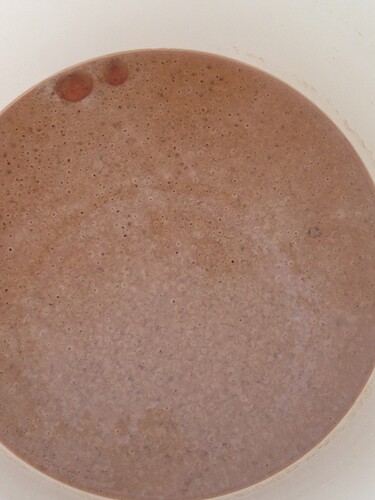Thought you guys might appreciate this. This is what you get when you use a highly flocculant yeast (wlp002) and feed it clear wort, strained through a paint strainer bag per @dannyboy58’s technique. ESB, 10# halcyon, 8oz TF dark crystal, 8oz flaked wheat, 40IBU of EKG and Bramling cross.
This thing was stuck so hard that I just dropped the auto siphon to the bottom of the bucket and let 'er go and didn’t transfer any trüb. The yeast cake was so clean and pure that it was like scooping peanut butter into the jar to harvest.
1 Like
I don’t strain my wort. I used to pour through a SS strainer to aerate.
Now I BIAB so I strain it pre-boil. I’ve been recirculating my mash some toward the end to improve pre-boil clarity as well. I use paint strainer bags for my hops for clean wort and to keep them out of the valves, pump and plate chiller. I use whirlfloc or irish moss for the last 15 of the boil. I pump the wort through a plate chiller and whirlpool for a bit before transfering to fermenters. This lets a lot of the break material settle prior to draining the kettle. I’ve thought about putting some kind of filtration on the pickup tube from the kettle but never tried it. Instead, I plan on leaving a quart in the kettle just to avoid getting into the break matter. Usually works out.
It’s a bit of effort and more waste than I like but it does result in a nice clean harvestable yeast cake. Another small benefit is pretty clear beer.
Another interesting thing I’ve noticed using the above process is the difference in fermentation characteristics in the two fermenters. I think it’s due to the different amounts of break material in the two fermenters. The wort in the second fermenter is always more clear than in the first one filled.
What I’ve noticed is that the first fermenter produces more heat during fermentation than the second. At first I thought one of my cube coolers was maybe better insulated but now after a few side by sides I’ve seen the trend in the first fermenter regardless of swamp cooler. Now there are lots of variables here. Splitting large starters by eyeballing and pouring, uneven aeration, even temperature by a degree or 2 but it must be related to the break as well.
They get kegged in the same order as well. Of course the last few beers out of the second keg are amazingly clear and good but there are way too many factors to consider there to claim that it’s due to the lesser amount of break material in the fermenter.
Long diatribe made long I don’t really think it hurts either way to just get it all in the yeast cake but a clean one sure is pretty huh @porkchop
Thats nice to see you can git it clean like that. I am going to build a hop rocket/torpedo and hope to get clear wort like that too. I don’t harvest yeast after a brew ( except this past winter doing lagers), I still prefer to build up big from the vial and split for the next brews coming up. I believe Denny explained its called culturing… Sneezles61
My bad - I’m sure someone around here does that. Maybe @brew_cat? Either way, I’ve started doing that with 5 gallon batches when I’m using leaf hops or late additions that I don’t want in my kettle, like bitter orange peel. Works really well, but it takes a bit to get the last bit of wort out of the gunk at the bottom of the kettle. Larger batches I use a bazooka tube and just recirculate through my CFC until the wort is clear.
To tie into the other thread, this one also had half a tab of Whirlfloc. Even with the flaked wheat in the mash, you could literally see the bottom of the kettle after cooling.
Probably the best way to do it, but I seldom plan that far ahead! 
I also just dumped a white labs pure pitch of 002 into this one, no starter, and gave it a bit more O2 than normal. But being an ESB, increased esters is kind of what you want. No issues with attenuation, looking forward to this one! I’m not going to say that starters aren’t necessary, but what you want from your yeast is just as important as pitch size. 
1 Like
